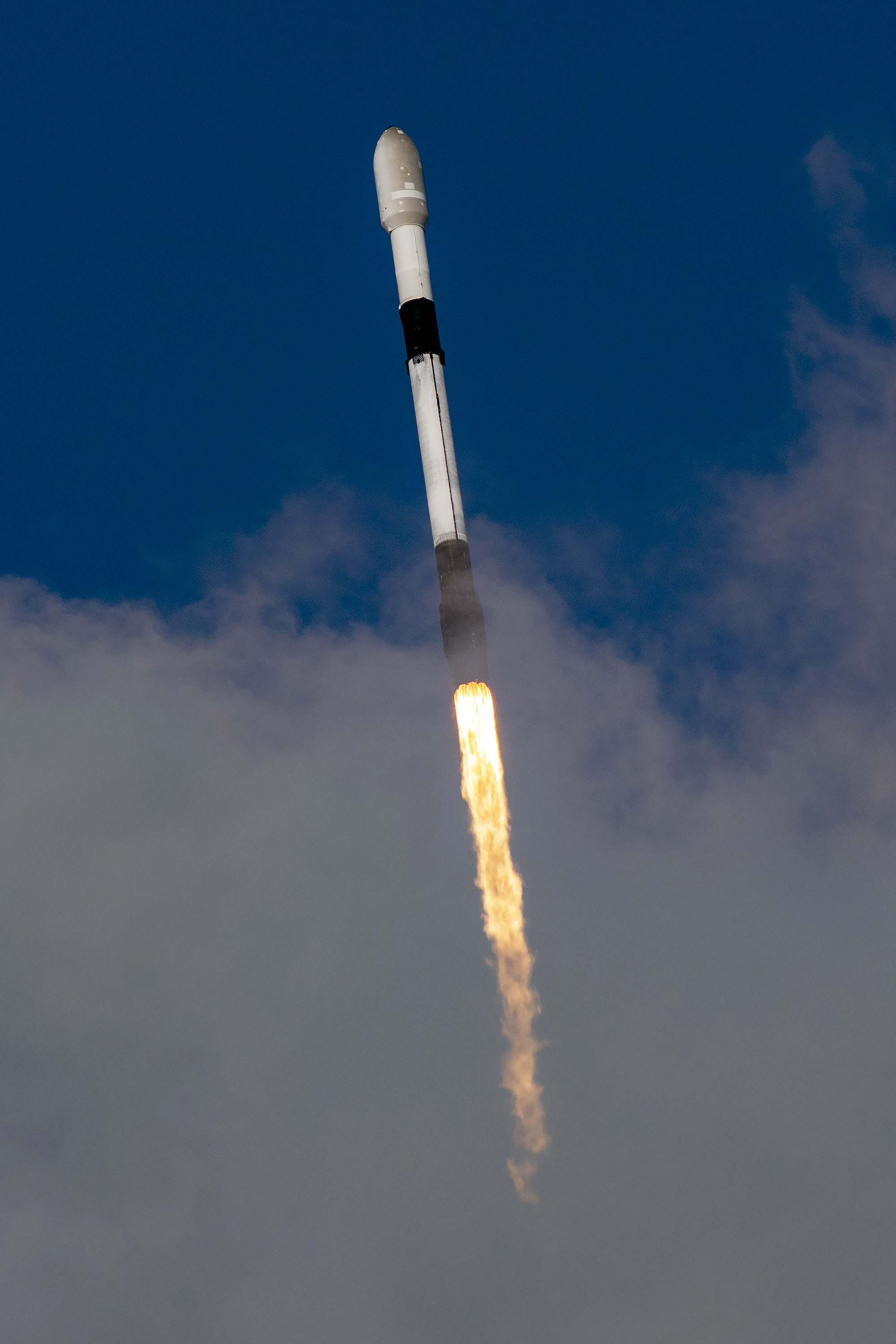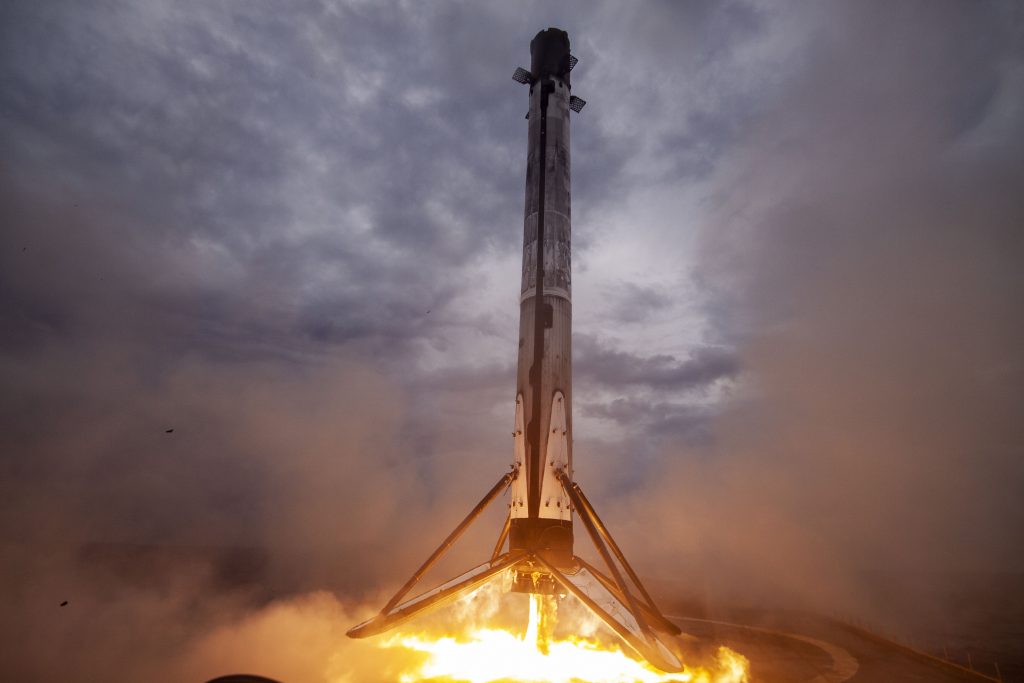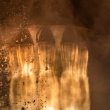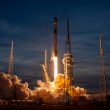Featured Image: SpaceX
Lift Off Time/Launch Window | January 03, 2023 – 14:55:56 UTC | 09:55:56 EST |
|---|---|
Mission Name | Transporter-6, the sixth SpaceX dedicated small satellite rideshare mission |
Launch Provider | SpaceX |
Customer | Numerous |
Rocket | Falcon 9 Block 5, B1060-15, 83.66-day turnaround. |
Launch Location | Space Launch Complex 40 (SLC-40), Cape Canaveral Space Force Station, Florida, USA |
Payload mass | Unknown |
Where are the satellites going? | Sun-synchronous orbit (SSO) |
Will they be attempting to recover the first stage? | Yes |
Where will the first stage land? | Landing Zone 1 (LZ-1) |
Will they be attempting to recover the fairings? | Yes, at approximately 604 km (~375 mi) downrange by Bob. |
Are these fairings new? | TBD |
How’s the weather looking? | The weather is currently 90% GO for launch (as of January 02, 2023 at 14:00 UTC) |
This will be the: | – 1st orbital launch attempt of 2023 – 1st Falcon 9 launch of 2023 – 1st mission for SpaceX of 2023 – 196th Falcon 9 mission overall – 172nd Falcon recovery booster attempt – 205th SpaceX mission overall |
Where to watch | Official livestream |
What’s All This Mean?
SpaceX will launch their sixth dedicated small satellite rideshare mission, Transporter-6, from Space Launch Complex 40 (SLC-40), Cape Canaveral Space Force Station, in Florida. Onboard Transporter-6 are 114 payloads from several customers. The previous mission, Transporter-5, hosted 59 payloads. This number includes satellites of many different sizes, as well as transfer vehicles, or space tugs. The Falcon 9 Block 5 will perform a boostback burn and touchdown on Landing Zone 1 (LZ-1).
What’s On Transporter-6?
Numerous payloads will be packed into the 5.2 m Falcon 9 fairing and deployed across nearly 20 minutes of mission time after reaching a Sun-Synchronous Orbit (SSO). The deployment sequence is determined by many variables including customer needs and satellite placement on the payload adapter rings.
Payloads have specific volumetric constraints and interface with one of two rings, one with a 15 in (~38 cm) diameter and the other a 24 in (~61 cm) diameter. The larger ring allows for more volume, or a larger payload. Customers can also purchase the top slot, which allows for the largest possible payload on the mission. The 15-inch ring ports can support a payload mass up to 454 kg (1,000 lb) while the 24-inch ring ports can support up to a 830 kg (1,830 lb) payload mass.

Payloads included projects from Momentous, Skycraft, Exolaunch, D-Orbit, and others
D-Orbit
D-Orbit will host payloads from two companies: Astrocast and AAC Clyde Space. All five satellites are of 3U size and share similar goals of Earth data gathering. Astrocast has four 3U satellites which, according to their website, will “track assets, monitor the environment, and save lives.” They will do this by creating and continuing to expand on a connected Internet of Things network. Also on board is a single 3U cubesat for ACC Clyde Space called Kelpie which will deliver Automatic Identification System (AIS) data to ORBCOMM.
Launcher’s Orbiter
Created with a dual purpose, Orbiter will be hosting a number of payloads in this mission. Launcher is quite an interesting company, which developed this spacecraft: a transfer vehicle, or other times known as “space tug.” However, as the enterprise’s name implies, they are developing their own rocket: Light. Orbiter will not only reach orbit atop SpaceX’s Falcon 9 — or other compatible rockets — but also as this small-lift launcher’s third stage.
In itself, the spacecraft masses at 200 kg (~440 lb), while being capable of carrying payloads up to 400 kg (~880 lb). Orbiter makes use of chemical propulsion giving it a delta-v capability of 500 m/s (~1640 ft/s) burning ethane — the fuel — and N2O — the oxidizer. Because of this, this tug will be capable of carrying out maneuvers like altitude changes, plane changes, in-plane phasing, and inclination changes.
Last but not least, Orbiter can be implemented as satellite platform (bus), which confers this spacecraft even further versatility. In this flight it will, nevertheless, act as transfer vehicle under the designation “SN1.”
PROVES -Yearling
Bronco Space was founded by Cal Poly Pomona’s students, with the aim of developing the tools necessary to help undergraduate students to gain knowledge and experience related to the space industry. The cubesat they are launching this time is a part of PROVES: the Pleiades Rapid Orbital Verification Experimental System. This is intended to be a program that will build a 1U platform that other educators could use at their own institutions. The concept is for it to be easy to use, affordable, open source, and modular.

Yearling belongs to the PROVES cubesat cluster, being a 1U spacecraft built on the PyCubed architecture. It will carry a camera for attitude determination, as well as three inertial measurement units. This very small satellite will serve as a lab bench in space for students. Additionally, it will use HopeRF RFM98 radio modules to communicate with the ground. In this way, the cubesat will be able to report its health, as well as information from its sensors: temperature, light, gyroscopic, and magnetometer.
Other Paylods
Numerous other payloads are also flying on Transporter-6 and serve a wide variety of services. These payloads include but are not limited to Geometric-1, Umbra, Blackjack, Skycraft, Gama Alpha, Star Vibe, YAM-5, RROCI, Menut, Planet Doves, Spire LEMUR, and others.
What Is Falcon 9 Block 5?
The Falcon 9 Block 5 is SpaceX’s partially reusable two-stage medium-lift launch vehicle. The vehicle consists of a reusable first stage, an expendable second stage, and, when in payload configuration, a pair of reusable fairing halves.
First Stage
The Falcon 9 first stage contains 9 Merlin 1D+ sea level engines. Each engine uses an open gas generator cycle and runs on RP-1 and liquid oxygen (LOx). Each engine produces 845 kN of thrust at sea level, with a specific impulse (ISP) of 285 seconds, and 934 kN in a vacuum with an ISP of 313 seconds. Due to the powerful nature of the engine, and the large amount of them, the Falcon 9 first stage is able to lose an engine right off the pad, or up to two later in flight, and be able to successfully place the payload into orbit.
The Merlin engines are ignited by triethylaluminum and triethylborane (TEA-TEB), which instantaneously burst into flames when mixed in the presence of oxygen. During static fire and launch the TEA-TEB is provided by the ground service equipment. However, as the Falcon 9 first stage is able to propulsively land, three of the Merlin engines (E1, E5, and E9) contain TEA-TEB canisters to relight for the boost back, reentry, and landing burns.
Second Stage
The Falcon 9 second stage is the only expendable part of the Falcon 9. It contains a singular MVacD engine that produces 992 kN of thrust and an ISP of 348 seconds. The second stage is capable of doing several burns, allowing the Falcon 9 to put payloads in several different orbits.
For missions with many burns and/or long coasts between burns, the second stage is able to be equipped with a mission extension package. When the second stage has this package it has a grey strip, which helps keep the RP-1 warm, an increased number of composite-overwrapped pressure vessels (COPVs) for pressurization control, and additional TEA-TEB.

Falcon 9 Booster
The booster supporting the Transporter-6 mission is B1060-15. As the name implies, the booster has supported 14 previous missions. Upon successful landing, the booster designation will change to B1060-16.
| B1060’s missions | Launch Date (UTC) | Turn Around Time (Days) |
| GPS III SV03 | June 30, 2020 20:10 | N/A |
| Starlink V1.0 L11 | September 3, 2020 12:46 | 64.69 |
| Starlink V1.0 L14 | October 24, 2020 15:31 | 51.11 |
| Türksat-5A | January 8, 2021 02:15 | 75.45 |
| Starlink V1.0 L18 | February 4, 2021 06:19 | 27.17 |
| Starlink V1.0 L22 | March 24, 2021 08:28 | 48.09 |
| Starlink V1.0 L24 | April 29, 2021 03:44 | 38.50 |
| Transporter-2 | June 30, 2021 19:31 | 62.66 |
| Starlink Group 4-3 | December 2, 2021 23:12 | 155.15 |
| Starlink Group 4-6 | January 19, 2022 02:02 | 47.22 |
| Starlink Group 4-9 | March 3, 2022 14:35 | 43.52 |
| Starlink Group 4-14 | April 21, 2022 17:51 | 49.14 |
| Starlink Group 4-19 | June 17, 2022 16:09 | 56.93 |
| Galaxy 33 & 34 | October 8, 2022 23:05 | 113.29 |
| Transporter-6 | January 2, 2023 14:56 | 83.66 |
Following stage separation, the Falcon 9 will conduct three burns. These burns aim to softly touch down the booster on SpaceX’s Landing Zone 1 (LZ-1).

Falcon 9 Fairings
The Falcon 9’s fairing consists of two dissimilar reusable halves. The first half (the half that faces away from the transport erector) is called the active half, and houses the pneumatics for the separation system. The other fairing half is called the passive half. As the name implies, this half plays a purely passive role in the fairing separation process, as it relies on the pneumatics from the active half.
Both fairing halves are equipped with cold gas thrusters and a parafoil which are used to softly touch down the fairing half in the ocean. SpaceX used to attempt to catch the fairing halves, however, at the end of 2020 this program was canceled due to safety risks and a low success rate. On Transporter-6, SpaceX will attempt to recover the fairing halves from the water with its recovery vessel Bob.
In 2021, SpaceX started flying a new version of the Falcon 9 fairing. The new “upgraded” version has vents only at the top of each fairing half, by the gap between the halves, whereas the old version had vents placed spread equidistantly around the base of the fairing. Moving the vents decreases the chance of water getting into the fairing, making the chance of a successful scoop significantly higher.

Countdown
| HR/MIN/SEC | EVENT |
|---|---|
| 00:38:00 | SpaceX Launch Director verifies go for propellant load |
| 00:35:00 | RP-1 (rocket grade kerosene) loading begins |
| 00:35:00 | 1st stage LOX (liquid oxygen) loading begins |
| 00:16:00 | 2nd stage LOX loading begins |
| 00:07:00 | Falcon 9 begins engine chill prior to launch |
| 00:01:00 | Command flight computer to begin final prelaunch checks |
| 00:01:00 | Propellant tank pressurization to flight pressure begins |
| 00:00:45 | SpaceX Launch Director verifies go for launch |
| 00:00:03 | Engine controller commands engine ignition sequence to start |
| 00:00:00 | Falcon 9 liftoff |
Launch, Landing, And Deployment
All Times Approximate.
| HR/MIN/SEC | EVENT |
|---|---|
| 00:01:12 | Max Q (moment of peak mechanical stress on the rocket) |
| 00:02:17 | 1st stage main engine cutoff (MECO) |
| 00:02:20 | 1st and 2nd stages separate |
| 00:02:28 | 2nd stage engine starts |
| 00:02:33 | 1st stage boostback burn begins |
| 00:03:20 | 1st stage boostback burn ends |
| 00:03:46 | Fairing deployment |
| 00:06:44 | 1st stage entry burn begins |
| 00:07:07 | 1st stage entry burn ends |
| 00:07:58 | 1st stage landing burn begins |
| 00:08:23 | 2nd stage engine cutoff (SECO) |
| 00:08:30 | 1st stage landing |
| 00:55:20 | 2nd stage engine restarts (SES-2) |
| 00:55:22 | 2nd stage engine cutoff (SECO-2) |
| 00:58:24 | KuwaitSat-1 deploys |
| 00:58:34 | BDSat-2 deploys |
| 00:58:35 | SharedSat 2211 deploys |
| 00:58:44 | LEMUR 2 EMMACULATE deploys |
| 00:58:55 | LEMUR 2 FUENTETAJA-01 deploys |
| 00:59:51 | ConnectaT1.2 deploys |
| 01:00:00 | GAMA Alpha deploys |
| 01:00:01 | BRO-8 deploys |
| 01:00:12 | Menut deploys |
| 01:00:18 | Huygens deploys |
| 01:00:24 | LEMUR 2 DISCLAIMER deploys |
| 01:00:35 | STAR VIBE deploys |
| 01:00:55 | LEMUR 2 STEVEALBERS deploys |
| 01:01:11 | ISILAUNCH Kleos KSF3-A deploys |
| 01:02:02 | Birkeland deploys |
| 01:02:07 | SPACEBEE-156/167 deploys |
| 01:02:47 | LEMUR 2 MMOLO deploys |
| 01:02:54 | ISILAUNCH Kleos KSF3-B deploys |
| 01:03:25 | ISILAUNCH Kleos KSF3-C deploys |
| 01:04:47 | LEMUR 2 PHILARI deploys |
| 01:05:02 | ISILAUNCH Kleos KSF3-D deploys |
| 01:05:03 | First Flock 4Y deploys |
| 01:05:11 | EWS RROCI deploys |
| 01:05:12 | SpaceBD ISILAUNCH PolyItan from Kiev deploys |
| 01:05:14 | Second Flock 4Y deploys |
| 01:05:23 | Guardian-alpha deploys |
| 01:05:25 | Third Flock 4Y deploys |
| 01:05:36 | Fourth Flock 4Y deploys |
| 01:05:40 | SpaceBD Sony Sphere-1 deploys |
| 01:05:50 | ISILAUNCH ClydeSpace NSLSat-2 deploys |
| 01:06:30 | ISILAUNCH Sternula-1 deploys |
| 01:06:35 | Fifth Flock 4Y deploys |
| 01:06:45 | Sixth Flock 4Y deploys |
| 01:06:58 | Seventh Flock 4Y deploys |
| 01:07:50 | Eighth Flock 4Y deploys |
| 01:08:33 | Ninth Flock 4Y deploys |
| 01:08:45 | 10th Flock 4Y deploys |
| 01:09:17 | 11th Flock 4Y deploys |
| 01:09:28 | 12th Flock 4Y deploys |
| 01:09:38 | 13th Flock 4Y deploys |
| 01:10:24 | 14th Flock 4Y deploys |
| 01:10:42 | 15th Flock 4Y deploys |
| 01:10:55 | 16th Flock 4Y deploys |
| 01:11:21 | 17th Flock 4Y deploys |
| 01:11:32 | 18th Flock 4Y deploys |
| 01:11:43 | 19th Flock 4Y deploys |
| 01:12:30 | 20th Flock 4Y deploys |
| 01:12:41 | 21st Flock 4Y deploys |
| 01:12:53 | 22nd Flock 4Y deploys |
| 01:13:26 | 23rd Flock 4Y deploys |
| 01:13:36 | 24th Flock 4Y deploys |
| 01:13:54 | 25th Flock 4Y deploys |
| 01:14:40 | 26th Flock 4Y deploys |
| 01:14:50 | 27th Flock 4Y deploys |
| 01:15:40 | 28th Flock 4Y deploys |
| 01:15:52 | 29th Flock 4Y deploys |
| 01:16:38 | 30th Flock 4Y deploys |
| 01:16:49 | 31st Flock 4Y deploys |
| 01:17:40 | 32nd Flock 4Y deploys |
| 01:17:50 | 33rd Flock 4Y deploys |
| 01:18:41 | 34th Flock 4Y deploys |
| 01:18:52 | 35th Flock 4Y deploys |
| 01:19:42 | 36th Flock 4Y deploys |
| 01:19:46 | Lynk Tower 3 deploys |
| 01:20:00 | Albania 1 deploys |
| 01:20:02 | Lynk Tower 4 deploys |
| 01:20:42 | YAM-5 deploys |
| 01:21:48 | NewSat 34 deploys |
| 01:22:03 | Albania 2 deploys |
| 01:22:58 | X22 deploys |
| 01:23:04 | X21 deploys |
| 01:23:46 | First Umbra deploys |
| 01:23:50 | Second Umbra deploys |
| 01:24:47 | NewSat 35 deploys |
| 01:24:59 | ION SCV-007 GLORIOUS GRATIA deploys |
| 01:26:05 | ION SCV-008 FIERCE FRANCISCUS deploys |
| 01:26:11 | Launcher Orbiter SN1 deploys |
| 01:27:31 | X27 deploys |
| 01:27:34 | Skykraft 1 deploys |
| 01:28:10 | Vigoride 5 deploys |
| 01:28:54 | CHIMERA LEO 1 deploys |
| 01:31:10 | EOS SAT-1 deploys |





